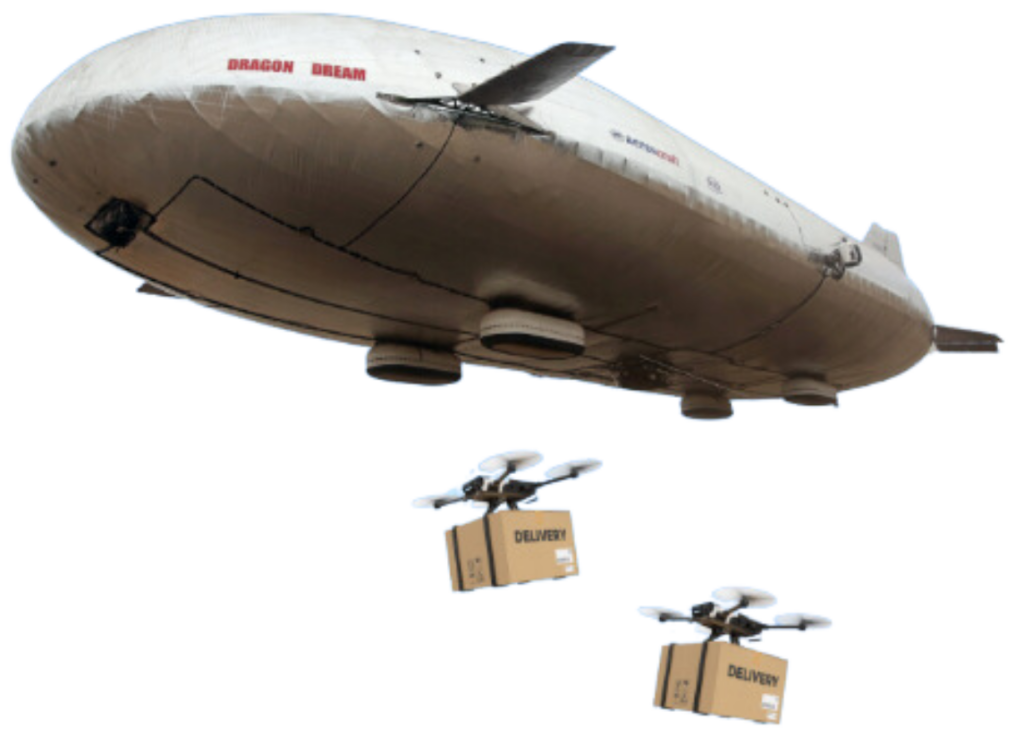THE ZERO-EMISSION VARIABLE BUOYANCY AIR VEHICLE
CREATING CLIMATE CHANGE IMPACT MITIGATION
Living through the years of the Covid pandemic and experiencing the global impacts of irreversible climate change, we acted toward a carbon-free future, but we cannot reverse the damage that has already been done to the planet.
We must become more resilient to those impacts that are now unavoidable.
Our years-long work has created a revolutionary and proven airship design: the Aeroscraft. With variable buoyancy and zero-emission capabilities, it is a novel solution for achieving unrestricted decarbonized cargo distribution, climate resiliency, and hope for our future.
Aeros was founded by Igor Pasternak with the vision of creating airships that do not require a cargo-ballast swap and enable a vertical, global-reach cargo transportation system without restrictions.
Today, the global logistics supply chain is overloaded and confined by the location and capacity of freeways, ports, railroads, and airports.
Aeros focuses on developing, manufacturing, and operating a family of Electric Zero-Emission Variable Buoyancy Cargo Airships, powered by hydrogen fuel cells, for carbon-free, fifth-dimensional, unhindered transportation.
In my opinion, the impact of being able to deliver and receive cargo by air anywhere in the world, with no landing and takeoff constraints, is on the order of a Kitty Hawk event.
Dr. Anthony Tether, DARPA director from 2001-2009
FOR THE FIRST TIME IN HISTORY, AN AIRCRAFT HAS BEEN DESIGNED TO CONTROL BUOYANT LIFT AND TO OFF-LOAD STORES DURING HOVER
DESIGNED FOR GAME CHANGING
The Aeroscraft is designed to revolutionize our normal, daily methods of shipping both within the states and overseas by eliminating the causes of our rising pollution.
Our air vehicles can carry at least 66 tons of cargo to places where no other aircraft can land, thanks to our hover technology, offering a clean, innovative approach to worldwide deliveries.
GLOBAL-REACH TRANSPORTATION SYSTEM WITHOUT RESTRICTIONS
DISRUPTIVE INNOVATION FOR GLOBAL LOGISTICS AND ECOMMERCE
Transforming expensive, carbon intensive, volatile, and highly complex logistics into one that is robust, zero-emission, simpler, more affordable, and accessible to a global population.
AEROS INFRASTRUCTURE INDEPENDENT VERTICAL LOGISTICS
AEROS INFRASTRUCTURE INDEPENDENT VERTICAL LOGISTICS
- Unrestricted hub-less collection–distribution network.
- Reduction of shipping time and cost by orders of magnitude.
- Integrates multiple supply-chains, no restrictions on hub location.
AEROS AI RECONFIGURATION ADAPTATIVE ROUTES NETWORK
AEROS AI RECONFIGURATION ADAPTATIVE ROUTES NETWORK
- Major reduction of truck-trailers on roads.
- Eliminating costly and carbon-intensive truck terminals.
- Replacing hub-spoke with the network of multiple
handoff touch-points.
AEROS 2ND DAY FREIGHT RIDESHARING AERIAL SERVICE ON DEMAND
AEROS 2ND DAY FREIGHT RIDESHARING AERIAL SERVICE ON DEMAND
- Next day air at price of ground economy tracking.
- Transportation solution directly to shippers and end-users.
- From the factory floor straight to the construction site.
DELIVERY OF CARGO TO ANY POINT ON THE GLOBE
DELIVERY OF CARGO TO ANY POINT ON THE GLOBE
- Access to austere sites that are unreachable today.
- Vertical Take-off and Landing operations at full payload.
- Airlift standard ISO containers.

CLIMATE RESILIENCE TECHNOLOGY
ZERO-EMISSION CARGO TRANSPORTATION
The movement of cargo is a significant source of increasing greenhouse gas emissions; therefore, the decarbonization of this sector is crucial in striving for a sustainable future. Achieving unrestricted supply value chains requires a strategic shift to emission-free logistics, faster global delivery reach, and the elimination of multimodal and logistics clusters.
CARBON-FREE ELECTRIC GRID
Clean electricity requires the construction of an advanced grid system, new power transmission lines, transport, and the installation of oversized and heavy generators, transformers, and transmission towers. The Aeroscraft provides much-needed transportation capabilities and accelerates the construction of the grid without added cost to consumers.
WIND TURBINE TRANSPORTATION.
Moving 50-ton wind turbine components and 160-foot blades from the factory floor to the project site, over significant distances and through varied and challenging terrain, is the most significant single barrier to the growth of green energy production. The Aeroscraft moves and delivers turbine units directly to any point, eliminating costly intermodal challenges.
GRID CLIMATE RESILIENCE IS IMPERATIVE.
Restoration of the grid after natural disasters requires the immediate delivery of indivisible, oversized, and extremely heavy components. The Aeroscraft can transport these components across the country in less than 24 hours, expediting power restoration and supporting communities during and after such events.

Irreversible climate change has led to extreme weather events with a horrifying level of destruction and devastation. We cannot stop the imminent threat from hurricanes, droughts, wildfires, flooding, and high winds.
The unique capabilities and logistics utility of the Aeroscraft will limit disruption, reduce impacts, and secure fast and resilient recovery from climate-related threats and natural disasters globally.

The Covid crisis has unfolded at a time when the number of severely food insecure people in the world had already risen by nearly 70 percent over the past four years, exacerbating the effects of climate change, conflict, and socio-economic shocks.
Globally, one in nine people face hunger daily, and for tens of millions, famine is a reality. At the same time, enough food is produced in the world to feed everyone on the planet. Developing countries and hard-to-reach areas are home to most of the world’s starving people. The inability to deliver food to these people is an underlying cause of hunger.


